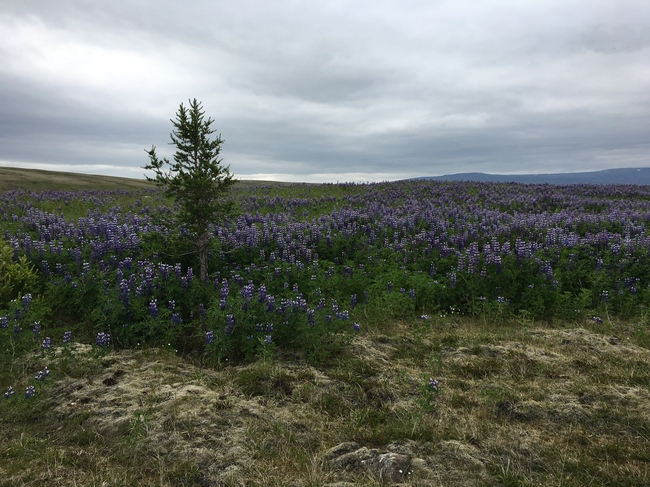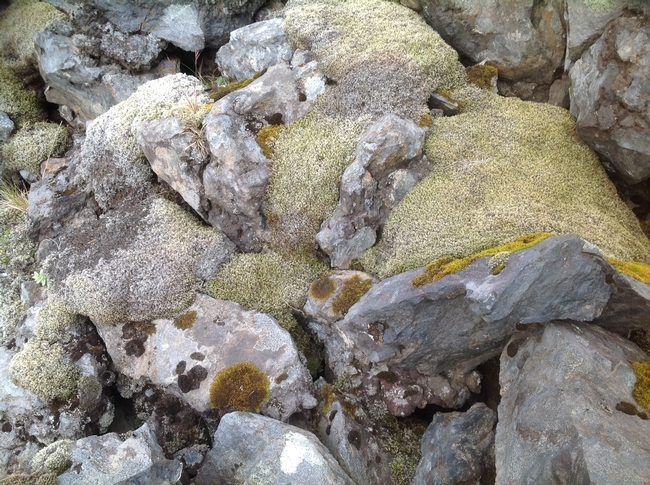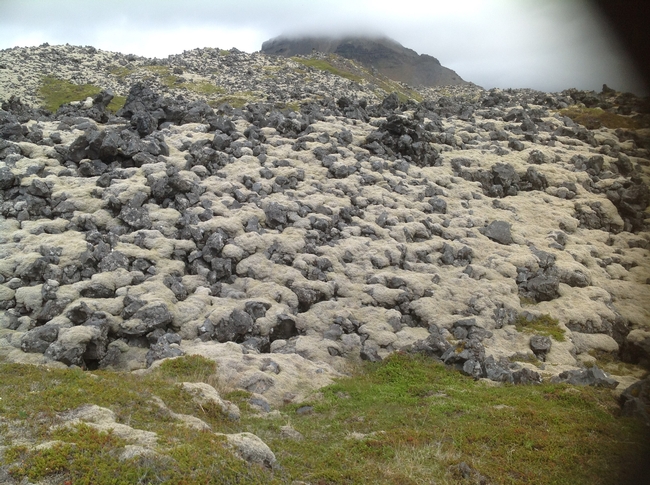Trip Musings-Iceland's Ecological Controversy
I can't completely call this a "road trip" musing because we had to fly to get to Iceland for this tour, then we got to the "road trip" part. The tour group that we use always introduces "controversial" local topics during the long bus rides, and in Iceland there is a great deal of controversy surrounding the lupine plants which one can see all over the open spaces, more in the south part of Iceland than in the north.
A little history before I get to the story part... Icelanders can trace their history WAY BACK to when the first settlers landed in Iceland from Norway. The stories have it that when they landed in Iceland, the island was covered with trees. Over time, the settlers built their homes and warmed them with wood from the trees and eventually, all the "good wood" was used up for homes and boats, and the "bad wood" was used for fires. That is, the place was deforested.
In the south part of the island, the winds are incredible, and assisted in eroding the denuded forest. Then the snows and snow melt eroded more of the soil. Then, to add insult to injury, there are those volcanoes which felt the need to erupt and spew lava and ash all over the place. Over time, the lava beds will re-grow in a very slow fashion, but in the 1940's the ecologists of the time decided to try to speed things up and brought the Nootka lupine in to help with the process. The lupine plant (Lupinus nootkatensis) is a perennial that is native to North America from the west coast of south-central Alaska to British Columbia. It is a member of the pea family, Fabaceae. Lupine was chosen because it is a rigorous self-seeder with a long taproot known to stabilize loose and eroded soil. It is also drought tolerant. It is used in land reclamation of large, barren areas because it is a nitrogen fixer and phosphorus extractor. It grows densely to about 20 inches in height and produces a large amount of beautiful purple and white flowers, and hence an even larger amount of seed to be transported by the birds and very strong winds. The dense growth also traps plant debris and creates compost to revitalize the soil. The other lupine varieties, while grown in local gardens have not spread themselves around as has the Nootka.
Now for the controversy: The lupine forms a thick canopy over the ground, thereby stopping the smaller native plants from taking hold in the soil, actually, the lava rock. The primary impact, according to the articles which I read is the woolly moss, also known as gray moss, because of its color. Gray moss (Racomitrium lanuginosum) is one of the first plants to grow in the lava rock and helps the soil regeneration process. While the lupine does this much faster, the native plants do not get a chance to grow because they don't get enough sunlight. In Alaska, the lupine has been proven to die back once the soil becomes more fertile, but it has not died back as quickly in Iceland as it did in Alaska. Many Icelanders are calling for the eradication of the lupine and letting nature get back in control, and the others want to help nature along.
The saying in Iceland goes like this, "If you get lost in the forest in Iceland, then you need to stand up!" The picture below shows a pine tree growing up at the edge of a lupine patch. Some of the gray moss is visible in front of the pine. To the north, there is a large amount of forested area where a person would not be able to stand up and see the way out of the forest. This has been due to a combination of a less windy environment and the efforts of a wealthy landowner to re-establish the forests. Over the last 50 years, this landowner has been said to be responsible for the planting of almost a billion trees in the northwest part of Iceland. The efforts were very apparent as our bus rolled along through the beautiful green countryside. Then we would pass a bunch of lupine popping up out of the lava rock alongside the numerous streams. The trees which he planted most are birch (Betulaceae) varieties, larch (family- Pinaceae, genus- Larix siberica), as well as other pine species native to this subarctic zone. In the north, I noticed a lot less of the lupine than I did in the south. Then again, it may have retreated because of the work it already did....

photos by Jenni Dodini

Gray moss close up.

lots of grey moss

